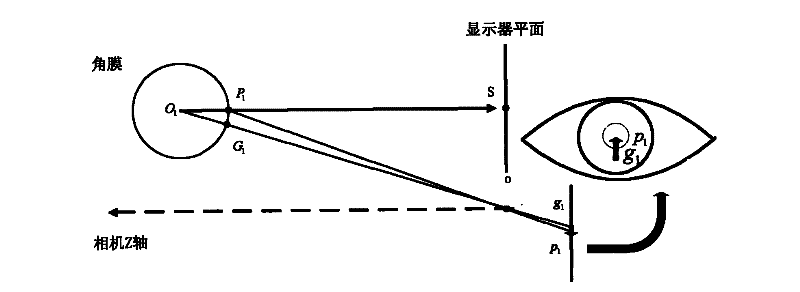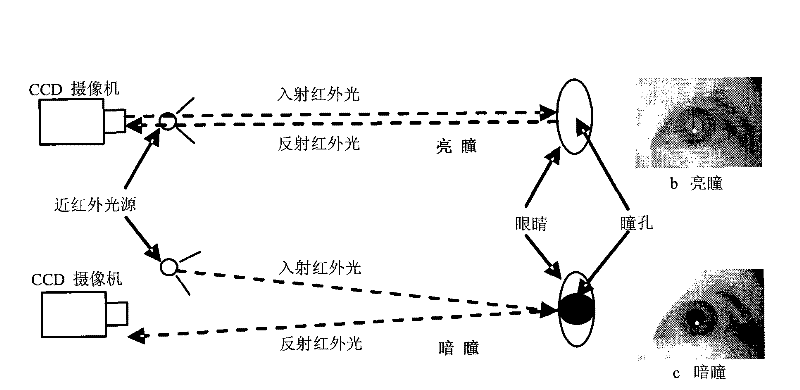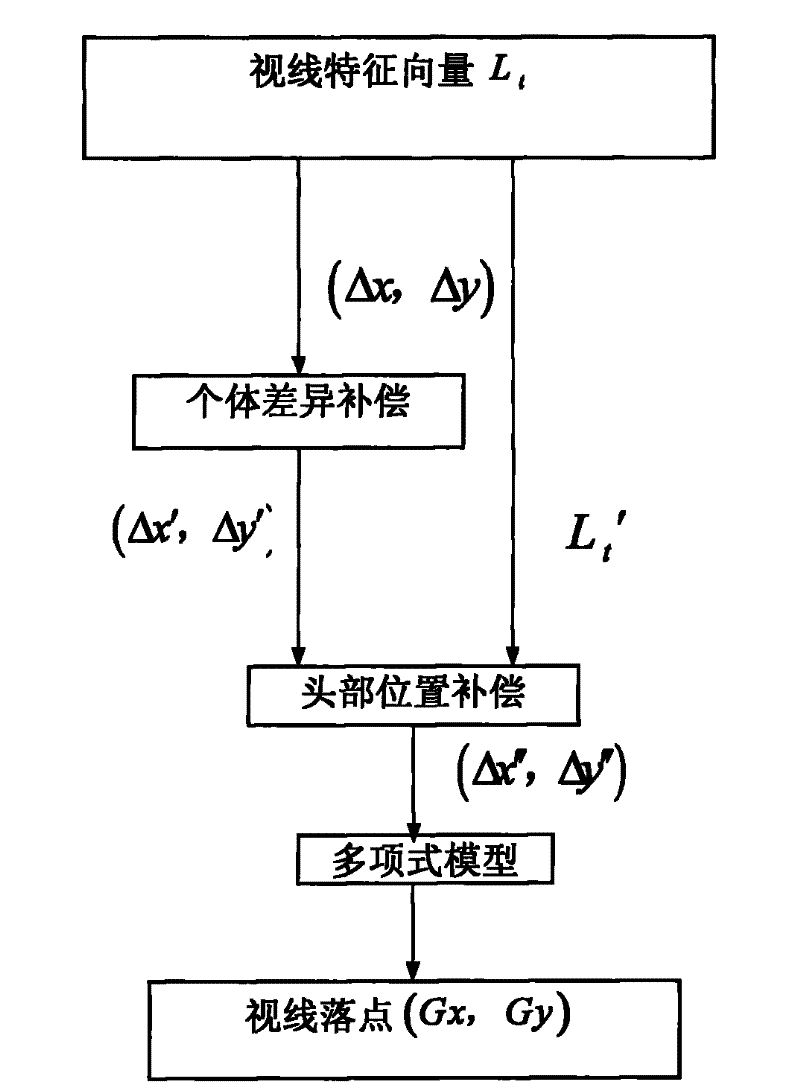Pupil center-corneal reflection (PCCR) based sight line evaluation method in sight line tracking system
A technology of eye-tracking and corneal reflection, which is applied in the field of human-computer interaction, can solve the problems of multi-point individual calibration, complex hardware configuration, and rapid decline in accuracy, and achieve the effect of simplifying user calibration and realizing line-of-sight estimation
- Summary
- Abstract
- Description
- Claims
- Application Information
AI Technical Summary
Problems solved by technology
Method used
Image
Examples
Embodiment Construction
[0037] The specific implementation process of the present invention will be further described below in conjunction with the accompanying drawings.
[0038] The present invention proposes a line-of-sight estimation method based on Pupil-Corneal Reflection (PCCR). The innovations of the work are mainly reflected in the following aspects: (a) In order to compensate for the influence of individual differences on line of sight estimation, a new compensation method for individual differences of line of sight feature vectors is proposed. (b) Complete line-of-sight mapping function (G x , G y )=F(Δx, Δy) is a complex nonlinear function, which proposes a line-of-sight mapping function (G x , G y )=f(Δx,Δy). (c) In order to solve the impact of the change of the user's head position on the accuracy of line of sight estimation, the present invention proposes a head position compensation method by analyzing the relationship between eye features and head position changes after head move...
PUM
 Login to View More
Login to View More Abstract
Description
Claims
Application Information
 Login to View More
Login to View More - R&D
- Intellectual Property
- Life Sciences
- Materials
- Tech Scout
- Unparalleled Data Quality
- Higher Quality Content
- 60% Fewer Hallucinations
Browse by: Latest US Patents, China's latest patents, Technical Efficacy Thesaurus, Application Domain, Technology Topic, Popular Technical Reports.
© 2025 PatSnap. All rights reserved.Legal|Privacy policy|Modern Slavery Act Transparency Statement|Sitemap|About US| Contact US: help@patsnap.com



